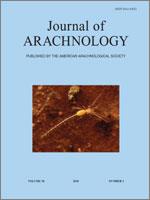This paper discusses the possible functional significance of the locations of the spigots of different types of silk gland on the different spinnerets of spiders. Deductions are based on recognition that some types of line are initiated by being attached to the dragline, that there is an anterior-posterior asymmetry in how such lines can be initiated, and that spigot location also affects the possibility of attaching lines to the substrate. Possible explanations are given for several morphological details, including the anterior location of the dragline, piriform and cribellum spigots, planar arrays of piriform and cribellum spigots, and posterior location of aciniform spigots. I argue that piriform gland products are not used to attach egg sac lines to each other, that sticky wrapping lines are initiated in theridiids and pholcids by attaching them to draglines and that lines from both aciniform and cylindriform glands are laid along with liquid that renders them sticky. The possible role of phylogenetic inertia in determining spigot locations is discussed. Further work is needed to determine whether termination of lines and accessibility of spigots for cleaning also influence their positions.
How to translate text using browser tools
1 December 2010
Possible functional significance of spigot placement on the spinnerets of spiders
William G. Eberhard
ACCESS THE FULL ARTICLE

The Journal of Arachnology
Vol. 38 • No. 3
December 2010
Vol. 38 • No. 3
December 2010
phylogenetics inertia
silk
silk gland




